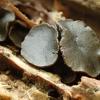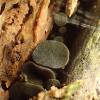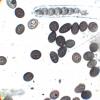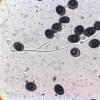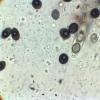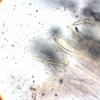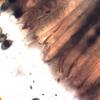
07-12-2025 16:07
Arnold BüschlenHallo, ich habe in einer Moos-Aufsammlung (epiphy

08-12-2025 21:04
Mark Stevens"Hello everyone,I'm relatively new to microscopy (

09-12-2025 12:06
 Andgelo Mombert
Andgelo Mombert
Bonjour,Je recherche l'article concernant Hypobryo

08-12-2025 18:59
 Lothar Krieglsteiner
Lothar Krieglsteiner
.. found by a seminar-participant, I do not know t

08-12-2025 17:37
 Lothar Krieglsteiner
Lothar Krieglsteiner
20.6.25, on branch of Abies infected and thickened

16-03-2014 22:00
Hello,I found this species a few months ago but ha

08-12-2025 13:39
Thomas Læssøehttps://svampe.databasen.org/observations/10572899
Dark Apothecia
Malcolm Greaves,
01-11-2018 17:53
A group of these were found on a rotting Ilex branch. I was looking for Mollisia subglobosa but this obviously is not the one. The Apothecia were up to 10mm across dark olivaceus brown with a short stout stalk. The spores were everything from ellipsoid to almost spherical. They had lots of bubbles when in water but only one when in Meltzers. 8-14 x 8-10 The paraphyses (some forked) were also filled with bubbles which seemed to react to Meltzers as did some elements of the outer surface of the apothecia.
Can anyone help
Thanks
Mal
Hans-Otto Baral,
01-11-2018 18:31

Re : Dark Apothecia
This is a wonderful collection:
Bulgariella pulla, a species that was recently found to belong in Helotiaceae near Phaeohelotium-like Australasian species (Helotium elaeocarpi, Lanzia ovispora).
The spores contain lots of oil drops, but what you get in Melzer's are DeBary bubbles, a response to drought because chloral hydrate extracts the water from the spores, and rigid spore walls that do not collapse are the reason for this gaseous phase in the spores which is probably something like a vacuum. If you let the spores dry and mount them in (!) immersion oil, you should see the same large bubble in each spore.
Zotto
Bulgariella pulla, a species that was recently found to belong in Helotiaceae near Phaeohelotium-like Australasian species (Helotium elaeocarpi, Lanzia ovispora).
The spores contain lots of oil drops, but what you get in Melzer's are DeBary bubbles, a response to drought because chloral hydrate extracts the water from the spores, and rigid spore walls that do not collapse are the reason for this gaseous phase in the spores which is probably something like a vacuum. If you let the spores dry and mount them in (!) immersion oil, you should see the same large bubble in each spore.
Zotto
Malcolm Greaves,
02-11-2018 00:19
Re : Dark Apothecia
That's great. Thanks for the Id and information. Quite a rarity in the U.K.
Mal
Mal

